Taganrog underground. Anti-Hitler resistance did not stop the whole occupation
Taganrog was occupied for a long time
The raid on Besergenovka was only one of the episodes of the desperate, heroic struggle of the Taganrog underground fighters against the Nazi occupiers and their accomplices. The city of Taganrog, located in the Rostov region, on the shores of the bay of the Azov Sea of the same name, as a port and a relatively large settlement had strategic importance. During the summer of 1941, when the Red Army suffered defeats from superior military-technical forces of the enemy and retreated east, from Taganrog, as well as from other Soviet cities, went to the front trains with thousands of mobilized men, with volunteers who had ”But not doubting whether to go west to defend their homeland. However, in general, the city continued, even under the bombing, to live its own life. Enterprises worked, children went to schools, doctors and teachers, workers and engineers regularly carried out their duties.
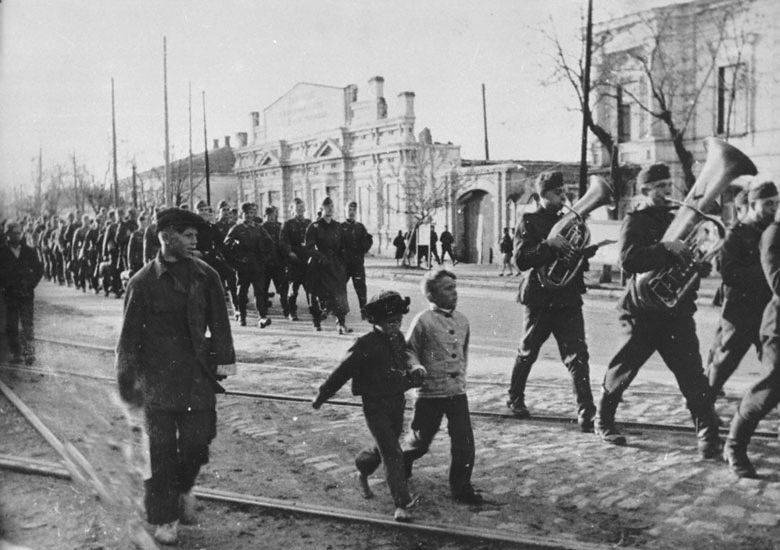
In September 1941 was declared a state of siege in Taganrog. The Nazis, rushing to the Caucasus, came closer to this beautiful southern city. After the invaders entered Varenovka, a large village in the vicinity of Taganrog, the way for the evacuation of people and wealth in the neighboring Rostov-on-Don was cut off. October 17 1941, after a fierce battle that lasted four hours, units of the Wehrmacht broke through the defensive positions held by the Red Army Fighter Regiment and broke into the city. The center of Taganrog, with its cozy small buildings and green streets, was in the hands of the invaders. Having broken through to the bay, the Nazis opened artillery fire on the boat division, which covered the departure of large ships from the port of Taganrog. Hundreds of Soviet sailors died. Started Nazi occupation of Taganrog. In addition to the German units, units of the Romanian army were stationed in Taganrog, acting in alliance with the Nazis, as well as units of the Russian auxiliary police recruited from traitors to the Motherland and all sorts of criminal and marginal trash.
As in other Soviet cities and villages that fell under the power of the Nazis, the atrocities of the invaders against the civilian population began in Taganrog. First of all, the Nazi executioners set about solving the "Jewish and Gypsy question." If in Rostov-on-Don in October 1941, the Hitlerites were able to hold out for just a week, and therefore did not manage to organize the full-scale destruction of the civilian population and committed massacres of Soviet citizens only in 1942, during the reoccupation of the city, in Taganrog the occupants strengthened thoroughly and in the fall of 1941 began to destroy the civilian population.
October 30 1941 from the assembly points on Vladimirskaya Square (now - Peace Square), the Nazis drove into a beam near the village of Petrushino, which is in the vicinity of Taganrog, more than two thousand Jews. In turn, a column of several hundred Gypsies was driven from the countryside into the same gully. A mass destruction of civilians was organized in the gully, after which it was called the “Gully of Death”. The direct organization of the destruction of the peaceful inhabitants of Taganrog and the surrounding area was entrusted to the SS 10 command team, which was led by SS Kurt Kristman. In 1942, this particular zonder command will destroy thousands of Soviet citizens in Rostov-on-Don - in Zmievskaya Gully. Not far from Taganrog, auxiliary police fighters assigned to the Sonder Commander team shot a Gypsy collective farm with machine guns. Women, children, old people - all died, and the Nazis burned down houses and collective farm outlets after a perfect slaughter.
Unlike the neighboring Rostov-on-Don, which the Germans took twice and twice the Red Army liberated the city, Taganrog lived under the rule of the occupiers for almost two years. All this for a long time in the city did not stop the activities of the brave underground workers who tried to inflict at least some damage to the Nazi invaders. The underground workers carried out sabotage against the German military units and local police, destroyed the transport infrastructure, blew up warehouses with German weapons and ammunition. So, 19 November 1941 in the center of Taganrog sounded a crushing explosion. It was the underground workers who celebrated the anniversary of the Great October Socialist Revolution, undermining the three-storey house where the occupational commandant's office was located. 147 killed the Nazis - the military, gendarmes, military and civilian administrators. In response, the Nazi occupation authorities circulated an appeal by the commandant Taganrog, in which he threatened all sorts of repression against the peaceful population of the city.
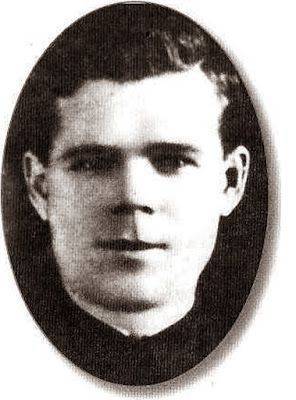
Taganrog underground created, as in other cities captured by the Germans, the Communists and Komsomol members. Two months after the city was seized by Hitler’s troops, a powerful underground organization with centralized leadership operated in Taganrog. The organization was headed by Vasily Ilyich Afonov (1910-1943), who was the secretary of the Matveyev-Kurgan regional executive committee of the councils before the war. In the Matoneevo-Kurgansky district, Afonov tried to create his own partisan detachment, but for his deployment he did not have any organizational and material resources, so the secretary of the district executive committee had no choice but to arrive in Taganrog, where it was easier to create an underground organization operating in urban environments . The commissar of the underground was Semyon (Nikolai) Morozov, who held the post of secretary of the Taganrog Komsomol city committee before the war.
Comrade Morozov - iron rod underground
Semen Grigorievich Morozov, a real “soul” of the Taganrog underground, was born on September 12 of the year 1914 in Taganrog. A root Taganrozhets, he was the son of a railwayman, but after the end of the seven-year plan he chose the path of pedagogical activity. He worked at the station of young naturalists at school number 2, was the senior leader in school number 16. In 1938, Morozov graduated from the Highest Communist Agricultural School in Rostov-on-Don and worked for a while as Head of the Agitation and Propaganda Department of the VLKSM District Committee in the Verkhnedonsky District of the Rostov Region. In parallel, the Komsomol secretary taught a course in geography at a local school. In 1939, Mr. Morozov returned to Taganrog, where he worked as a deputy director at the Palace of Pioneers and Schoolchildren. In parallel, Morozov studied at the Taganrog Teacher Training Institute, headed the agitation and propaganda department of the Komsomol city committee.
Twenty-seven-year-old Morozov was easier to find a common language with the young Taganrozh people, among whom he enjoyed authority. After the start of World War II, Semyon Morozov, who gained fame under his pseudonym "Nikolai", was elected first secretary of the Taganrog city committee of the Komsomol. He stayed in the city, going to the illegal situation, and settled in a dugout on the outskirts of Taganrog. It is noteworthy that at first the regional party committee did not want to put Morozov at the head of the underground. No, they trusted and even very much trusted Semyon Grigorievich, but he was a public, well-known person in Taganrog.
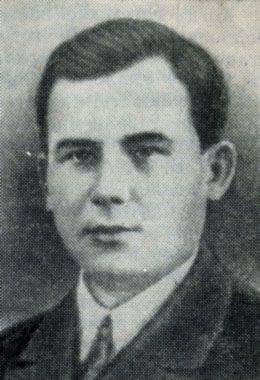 From a young age he participated in social activities, was a pioneer leader, Komsomol organizer, secretary of the Komsomol. Morozova knew almost the entire Taganrog youth and a large number of senior Taganrozh residents. Therefore, to leave Morozov to direct the underground meant, in effect, to substitute a person whose face knew the whole city. But, in the end, it was Morozov who became the commissar of the Taganrog underground - perhaps because they simply did not find a more suitable candidate. And Morozov won over with his ideological, moral qualities, fearlessness. And, last but not least, Morozov had extensive connections among young people, knew the city Komsomol activists perfectly, knew who among them was and could easily create an extensive network of anti-fascist resistance in the city.
From a young age he participated in social activities, was a pioneer leader, Komsomol organizer, secretary of the Komsomol. Morozova knew almost the entire Taganrog youth and a large number of senior Taganrozh residents. Therefore, to leave Morozov to direct the underground meant, in effect, to substitute a person whose face knew the whole city. But, in the end, it was Morozov who became the commissar of the Taganrog underground - perhaps because they simply did not find a more suitable candidate. And Morozov won over with his ideological, moral qualities, fearlessness. And, last but not least, Morozov had extensive connections among young people, knew the city Komsomol activists perfectly, knew who among them was and could easily create an extensive network of anti-fascist resistance in the city. Morozov recruited his recent pupils to the organization - a few years before the war he worked as a Pioneer leader. Now the pioneers, who remembered him as a leader, have grown up and become young men and women of 17-18 age. At the end of 1941, the city of Morozov managed to put together an organization of the Taganrog underground workers, whose oath was taken by more than two hundred young residents of the city. The oath said: “I, joining the ranks of the fighters of the Soviet government against the German invaders, swear that I will be bold and fearless in fulfilling the tasks entrusted to me; I will be vigilant and not talkative; I will unconditionally fulfill the instructions and orders given to me. If I break this oath, may there be universal contempt and death. ” Among the underground allocated most fearless activists - Yuri Pazon Anatoly Nazarenko, Loew Kostikov, Nikolai Kuznetsov, Peter and his sister Turubara Paradise and Val, Ala Varfolomeeva, Raya drops Valya Khlopova Nonna Trofimova Anastasia Vozyka Nina Zhdanova, Eugene Sharov.
Researcher of the Taganrog Military History Museum, Valentina Ivanovna Ratnik, in an interview with the press, emphasized that “the base, the cells, all these concepts of today. Then there was nothing of this. Then Morozov simply met two or three guys whom he knew well from his Komsomol and pioneer work. These were not the first people coming from the street ... Morozov knew Kostikov well. He knew the Turubarovs well. These were the guys who formed the core of the urban Komsomol, the leaders of urban youth. It then came to the Komsomol whole classes. But then joining the Komsomol was a great cause, an honor, so the best were honored, those who were said to be an informal leader before the war ... in their schools, in their classes, in some kind of military-patriotic work. And, of course, Morozov knew them well ”(Quoted from: Labutina J. Will the Motherland remember them? - Interview with Valentina Ivanovna, a researcher at the Taganrog Historical and Literary Museum, the Warrior // http://fire-of-war.ru /podpolie/p0753.htm).
The underground began unarmed
It is striking that at the beginning of their combat path the Taganrog underground had no necessary equipment. Neither weapons, there were no radio stations, no street lamps, not even a wristwatch. Radio collected themselves. The organization’s first military weapon was a parabellum, which Morozov personally pulled from the Nazi truck, taking advantage of the moment when the soldiers were distracted. The adult structure of the organization was represented mainly by teachers, and the youth - by high school students. Morozov’s organization united 27 groups that operated autonomously, but in constant contact with the headquarters of the Taganrog underground. The total number of underground organizations reached 500-600 people. One of the groups was led by a physics teacher V.I. Sharolapov. Connected underground headquarters was Louise Yost, who was only 13 years old.
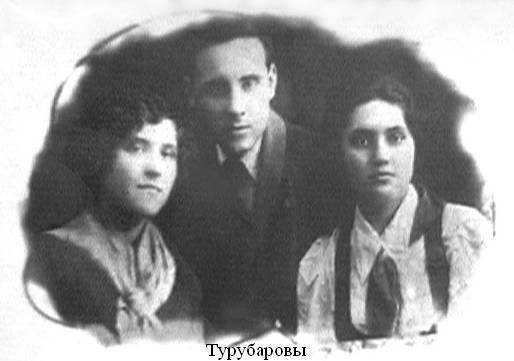
Group meetings were held in the house of fishermen Turubarovyh. This wonderful family of Soviet patriots lived in a house on Ispolkomovsky lane, 107. The elder was Peter Kuzmich Turubarov (1918-1943). He worked at the plant them. Dimitrov as a mechanic, when the time came, he went to the army, to the border troops of the NKVD of the USSR. During the German attack on the Soviet border was contused and captured. Trying to escape from captivity, Peter was captured by the Nazis. But the second escape attempt was nevertheless successful - the brave border guard managed to get to Taganrog, which was already under the authority of the German occupiers. In his hometown, Peter Turubarov immediately joined the struggle of the underground organization. He led a group that was tasked with collecting weapons and preparing incendiary bottles. No less heroic was the behavior of Peter's sister, Valentina Kuzminichna Turubarova (1919-1943). Like her brother, before the war she worked at the plant. Dimitrova - design engineer. The youngest girl from the Tuubarov family - sixteen-year-old Raisa Kuzminichna Turubarova (1926-1943) also joined the underground organization. Before the war, she studied at school number 29, like millions of other Soviet boys and girls - her peers, was in the Komsomol. In the underground organization Raya Turubarova performed many important tasks.
Activists of the underground organization created by Morozov worked in all possible areas of activity. The most important direction was sabotage against the military and civilian targets of the enemy. During the occupation of Taganrog, the underground workers, the “frost men” of 68, once incapacitated the Wehrmacht military field and staff communications. A number of arsons and explosions at German sites were carried out. So, in December 1941, at the Gidropress plant, underground workers burned a garage with forty cars and motorbikes of the occupants. Port warehouses were set on fire, the commandant's office was blown up. In June, the 1942 of the underground fighters organized the wreckage of a train carrying the military unit of the Nazis. Several dozens of soldiers and officers of the occupying forces were killed. Twice were undermined with ammunition at the station "Taganrog". In December, the Nazi garrison in the village of Mayakovka was interrupted by an underground fighter. During the raid, four machine guns were captured and a large group of Soviet prisoners of war was released. About the attack on Besergenovka on New Year's Eve 1942, we have already described above.
Underfloor K. Athonov disabled the machine, with the help of which the repair of the damaged and failed enemy tanks. At another plant, underground workers doused the motors of dozens of cars with nitric acid, incapacitating motor vehicles. Underground workers were working in a railway depot. But once the Hitlerite officer, who controlled the work of the depot, suspected that the young guys - workers pour sand into the axle boxes. The Nazi tried to detain the underground, but the guys cut his skull with a sledgehammer and burned the corpse in the firebox of the engine. The underground also acted as air guides - with the help of flashlights they sent signals to Soviet aircraft and our aviation thrice destroyed enemy ammunition depots with well-aimed air strikes.
In addition to sabotage against the infrastructure and military units of the enemy, agitation and propaganda among the population of the city and prisoners of war were an important activity. After all, to keep people in faith in the victory of Soviet weapons, that the arrival of the Nazis in the city temporary and in the near future, the Soviet army would knock the fascists out of Taganrog and restore Soviet power, was no less important than direct armed opposition to the occupiers. Almost from the very beginning of the occupation of Taganrog, the headquarters of an underground organization began to produce and distribute leaflets. Later, the underground newspaper "Vesti from the Beloved Motherland" appeared. Since the underground workers had a home-made radio receiver, they had the opportunity to receive Sovinformburo reports and then, after printing them, distribute them among the inhabitants of Taganrog. 4 March 1942 A letter from the Taganrog underground fighters was printed in the newspaper “Molot”. It was called “We will not lay down arms! (A letter from the enemy rear of the youth of the city of Taganrog) ". The appeal stated: “Dear fathers and brothers who are in the ranks of the Red Army! We send you hot, warlike greetings and the news that we will not lay down arms, and no atrocities of the fascists will break our will to fight, to victory over the hated rapists. " Exposing the fascist lies about the fall of the Soviet capital, the underground workers wrote: “Moscow is unharmed. The Kremlin stars are still burning, throwing their fiery light into all corners of our broad and immense Motherland. ”
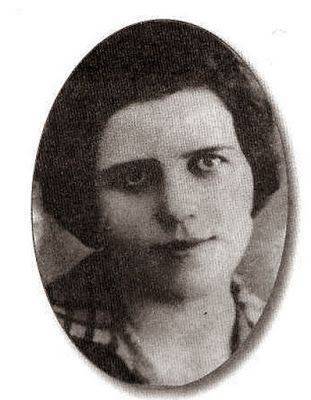 Engaged underground workers and less prominent, but no less important for the organization of antifascist resistance, work. So, the doctor Nina Ivanovna Kozubko actively worked in the organization. She gave out to young men and girls, whom the Germans were going to steal to Germany, fictitious certificates about diseases. This was very important, since the Germans hijacked fifteen thousand people from Taganrog, most of whom were young people of pre-conscription age. By the way, the hijacking of such a large number of young people from the city became possible, including because at the very beginning of the assault on Taganrog, the Nazis managed to cut the retreat routes to Rostov, and trains with material values and evacuated teenagers could not leave the city. As a result, young Soviet citizens found themselves in occupied Taganrog, and the fascists who needed young and healthy slaves who were to be deported to Germany immediately took advantage of this.
Engaged underground workers and less prominent, but no less important for the organization of antifascist resistance, work. So, the doctor Nina Ivanovna Kozubko actively worked in the organization. She gave out to young men and girls, whom the Germans were going to steal to Germany, fictitious certificates about diseases. This was very important, since the Germans hijacked fifteen thousand people from Taganrog, most of whom were young people of pre-conscription age. By the way, the hijacking of such a large number of young people from the city became possible, including because at the very beginning of the assault on Taganrog, the Nazis managed to cut the retreat routes to Rostov, and trains with material values and evacuated teenagers could not leave the city. As a result, young Soviet citizens found themselves in occupied Taganrog, and the fascists who needed young and healthy slaves who were to be deported to Germany immediately took advantage of this. Heroes of the fifteenth school - group Tolstova
Independently from the underground organization of Morozov, a group of young Soviet patriots acted — Komsomol members from secondary school No. 15. It consisted of Anatoly Tolstov, Vladimir Stukanov, Nikolai Simankov, Gennady Lyzlov, Viktor Kizryakov, Vladimir Chernyavsky, Vadim Lokhtin, Yuri Fisenko. The informal leader of the group was Anatoly Tolstov.
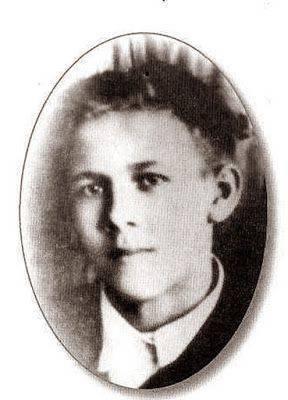 Unlike other members of the Komsomol, before the war, he was trained in the fighter battalion, which selected senior students. Tolya Tolstov gathered his friends and acquaintances, and then proceeded to the underground work. The young men were engaged in reconnaissance of the location of German and Romanian strategic objects, including ammunition depots, artillery batteries. All explored objects were applied to a special map. Komsomol members also tried to use every opportunity to steal weapons from a hesitating German or Romanian soldier. Prisoners of war who had escaped from the camp hid in the house of the young underground worker Volodya Chernyavsky. Then Volodya’s father, a fisherman, who knew the coast very well, sent the escaped prisoners of war to the other side of the Gulf of Taganrog, where Soviet troops were already stationed. Through the mother and aunt of Yuri Fisenko, who worked as nurses in a German hospital, the young members of the underground got out medicines and transported them to prisoners of war.
Unlike other members of the Komsomol, before the war, he was trained in the fighter battalion, which selected senior students. Tolya Tolstov gathered his friends and acquaintances, and then proceeded to the underground work. The young men were engaged in reconnaissance of the location of German and Romanian strategic objects, including ammunition depots, artillery batteries. All explored objects were applied to a special map. Komsomol members also tried to use every opportunity to steal weapons from a hesitating German or Romanian soldier. Prisoners of war who had escaped from the camp hid in the house of the young underground worker Volodya Chernyavsky. Then Volodya’s father, a fisherman, who knew the coast very well, sent the escaped prisoners of war to the other side of the Gulf of Taganrog, where Soviet troops were already stationed. Through the mother and aunt of Yuri Fisenko, who worked as nurses in a German hospital, the young members of the underground got out medicines and transported them to prisoners of war. However, a group of students of school number 15 existed not so long as the Morozov organization. This was due to a lack of experience and full preparation, and age-maximism often played against young patriots. As early as December 1941, two months after the occupation, Anatoly Tolstov and Vladimir Stukanev were arrested. In early January, 1942 shot Viktor Kizyakov and other schoolchildren. Nikolai Simankov "fell asleep" by chance. He kept stolen weapons in the attic of the house in the courtyard. There a German machine gun accidentally discovered a neighbor boy who brought it to his mother. The next day Kohl, his aunt, and her neighbor were arrested. Kohl was beaten by the Gestapo beyond recognition.
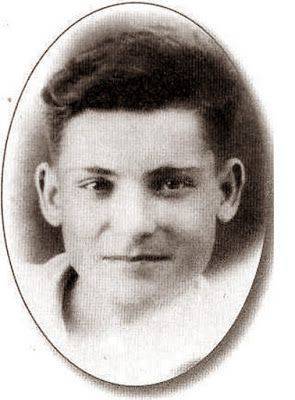 “The guys were simply tortured in German dungeons, without any discount on the fact that they are still children ... After all, there are many ways to unleash a person’s language, bringing it to a state where he no longer controls himself. They, for example, forcibly poured moonshine, soldered to such a state when a person completely loses a sense of reality. And the secret service expert said that in such a state, a person, unwilling to, can name precisely those names that are most afraid to utter ... But, as far as we know, not one of the boys betrayed his comrades, ”said teacher Lyudmila Anatolyevna Byrdina, head of the youthful Club "Patriot" (Labutina J.. They were very children, but none of them betrayed comrades // http://fire-of-war.ru/podpolie/p0753.htm). After the arrest of Tolstov and Stukanev, the other guys decided to leave Taganrog by sea. Hoping for a fisherman Chernyavsky senior. But on the way to Cherniavskys the young men were already waiting for an ambush. Simankovu managed to escape and escape. Returning home, he saw the mother in tears. She said that the Germans came and set a condition - either Kolya surrenders, or they shoot Kolya's mother and six-year-old brother. Nikolai Simankov went to the Gestapo to surrender ... Despite his young age, he had to make a very difficult choice.
“The guys were simply tortured in German dungeons, without any discount on the fact that they are still children ... After all, there are many ways to unleash a person’s language, bringing it to a state where he no longer controls himself. They, for example, forcibly poured moonshine, soldered to such a state when a person completely loses a sense of reality. And the secret service expert said that in such a state, a person, unwilling to, can name precisely those names that are most afraid to utter ... But, as far as we know, not one of the boys betrayed his comrades, ”said teacher Lyudmila Anatolyevna Byrdina, head of the youthful Club "Patriot" (Labutina J.. They were very children, but none of them betrayed comrades // http://fire-of-war.ru/podpolie/p0753.htm). After the arrest of Tolstov and Stukanev, the other guys decided to leave Taganrog by sea. Hoping for a fisherman Chernyavsky senior. But on the way to Cherniavskys the young men were already waiting for an ambush. Simankovu managed to escape and escape. Returning home, he saw the mother in tears. She said that the Germans came and set a condition - either Kolya surrenders, or they shoot Kolya's mother and six-year-old brother. Nikolai Simankov went to the Gestapo to surrender ... Despite his young age, he had to make a very difficult choice. Penalty in the "gully of death"
As for the organization of Morozov, it was held disproportionately longer. Naturally, the Hitlerite Gestapo made titanic efforts to search for and capture the fearless underground fighters. To avoid the possible introduction of provocateurs, the underground organization was organized according to the network principle, with minimal familiarity of the activists among themselves. The leaders of the groups that were part of the organization contacted the leaders of the underground. And, nevertheless, provocateurs were introduced into the organization. A special group was responsible for intelligence and counterintelligence in the Taganrog underground, in which the son of the Hungarian émigré Sergei Weiss was also a member.
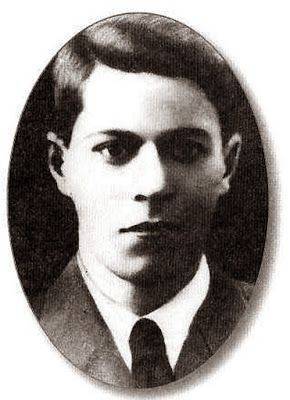 He was only twenty years old, but he managed to work as a gas welder, to lead a model airplane in the Palace of Pioneers. In 1942, Weiss was hijacked to work in Germany, but he managed to escape and return to Taganrog, joining Morozov’s underground organization. Yuri Pason, a twenty-two-year-old student at the Physics and Mathematics Faculty of Rostov State University, was also a former Red Army man. Pason was drafted into the army in the first days of the war, was wounded and returned to Taganrog. Here he met the occupation and joined the Morozov underground organization.
He was only twenty years old, but he managed to work as a gas welder, to lead a model airplane in the Palace of Pioneers. In 1942, Weiss was hijacked to work in Germany, but he managed to escape and return to Taganrog, joining Morozov’s underground organization. Yuri Pason, a twenty-two-year-old student at the Physics and Mathematics Faculty of Rostov State University, was also a former Red Army man. Pason was drafted into the army in the first days of the war, was wounded and returned to Taganrog. Here he met the occupation and joined the Morozov underground organization. Weiss and Pazon, disguised as Hitler, executed the traitor who worked for the Hitler gestapo. But the city remained overrun by the gunners, who for a small monetary reward were ready to give the Nazis their own countrymen, who were heroically fighting for the liberation of Taganrog. It is known that the Nazis paid ten rubles for a denunciation of a Komsomol, twenty-five rubles for a communist, and a hundred rubles for a partisan or underground worker. There were scum who saw no moral obstacles to the receipt of this bloody money, and without a twinge of conscience they surrendered Soviet patriots to the Hitler punishers. It is therefore surprising that the underground organization managed to hold out for almost two years - all the time while Taganrog remained occupied by the Nazi troops.
In addition to the organized underground, the Nazis were opposed by many of the inhabitants of Taganrog, who were not in any underground groups - as they would say now, the inhabitants. Many decent and courageous tagganrozhtsy, despite the deadly risk (in the case of exposure, the penalty was almost inevitable) were engaged in harboring prisoners of war, Jews, communists, tore down fascist leaflets. Thus, a student of the school number 4 V. Romanenko was shot for distributing anti-fascist leaflets in the city. In addition to young people, adults, even elderly people, participated in the resistance. They hid prisoners of war and Jews in their lives, saving many human lives. These ordinary Soviet citizens for the most part did not receive any orders and medals after the war, but the best reward for them was a good memory in the hearts of the people they saved and all the patriots of the country as a whole.
14 February 1943 was liberated from the Nazi invaders Rostov-on-Don. The Taganrozh people were also expecting a quick release. Perhaps that is why the vigilance of members of the Taganrog underground has somewhat decreased. How the Nazis managed to get on the trail of the underground workers is still unknown. In mid-February, 1943 in Taganrog began mass arrests of members and sympathizers of an underground organization. Peter Turubarov shot himself during the arrest. 18 February 1943 was arrested Nikolai Morozov himself. He was subjected to terrible torture - he was squeezed with a steel vise, his head was whipped from a telephone cable. Fearless secretary of the Komsomol did not say a word. 23 February 1943 Comrade Morozov and a group of 18 from his comrades were shot on the shore of the Taganrog Bay. After the torture and brutal mockery, the sisters Valentina and Raisa Turubarov were also shot. The heroes of the Taganrog underground were buried in a mass grave near the village of Petrushino. The executors of the execution of Soviet patriots were Soviet citizens in the past — policemen who had gone into the service of the Nazis. The Germans awarded the executioners orders of the "Servants of the Eastern peoples" of the second class. The lower ranks of the police were given a bottle of vodka. So, the former Soviet citizens — Russians, Ukrainians, Cossacks, representatives of other nations — shot yesterday’s compatriots for a bottle and a medal.
However, even the execution of the leader of the underground organization and its leading activists did not lead to the cessation of the activities of the Taganrog underground. Subversion against the Nazis, the spread of leaflets, acts of sabotage continued. The commandant's office of the occupied Taganrog, the Gestapo, the auxiliary police - all were knocked down in search of the heroes of the underground. In the end, the Gestapo managed to introduce into the organization of traitors who gave out almost all the participants of the Taganrog underground. In May-June of 1943, mass arrests of underground workers and citizens suspected of having links with underground groups began in Taganrog. The Nazis arrested more than 200 taganrozhtsy, among whom were many women and minors.
12 June 1943. In a gully near the village of Petrushino, 120 executed underground fighters. Among them were people of different ages and social status — sixty-four-year-old F.R. Pertseva, her son F.P. Pertsev, I.V. Pertseva, A.V. Pertseva, K.P. Susenko, Stepan Mostovenko, Nina Zhdanova, Nina Kozubko, husband and wife Yu. A. and T. I. Kaminsky, representatives of the younger generation Georgy Pason, Sergey Weiss, Nikolai Kuznetsov, Anatoly Nazarenko, Viktor Shevchenko, Alla Varfolomeeva, Valentina Khlopova, Raya Drop, Lida Liholetova, Nonna Trofimova, Maria Kuschenko, dozens of other great patriots of their country.
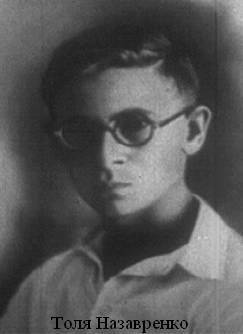 The bit of Nazarenko who was shot in a beam was at the time of execution only 13 years. Behind this fearless, precocious adolescent, was not only studying at school, but also working as a literary officer in the newspaper Taganrogskaya Pravda and participating in an underground organization as the author and distributor of campaign materials. Tolik Nazarenko was betrayed by a traitor soon after he stole an important scheme from a German officer. Immediately before the release of Taganrog, the Nazis who were in a hurry to evacuate decided to kill all the prisoners held in the basement prison. They were shot by the personal order of the chief of the Russian auxiliary police Taganrog Boris Stoyanov. After the execution of the last members of the underground and their relatives, Stoyanov and a group of policemen subordinate to him set fire to the police building in order to destroy the archives, and left Taganrog together with the retreating German units.
The bit of Nazarenko who was shot in a beam was at the time of execution only 13 years. Behind this fearless, precocious adolescent, was not only studying at school, but also working as a literary officer in the newspaper Taganrogskaya Pravda and participating in an underground organization as the author and distributor of campaign materials. Tolik Nazarenko was betrayed by a traitor soon after he stole an important scheme from a German officer. Immediately before the release of Taganrog, the Nazis who were in a hurry to evacuate decided to kill all the prisoners held in the basement prison. They were shot by the personal order of the chief of the Russian auxiliary police Taganrog Boris Stoyanov. After the execution of the last members of the underground and their relatives, Stoyanov and a group of policemen subordinate to him set fire to the police building in order to destroy the archives, and left Taganrog together with the retreating German units. But, despite the executions and tortures of the Soviet patriots seized by the Nazis, certain groups of underground fighters continued to resist the Nazi invaders until the very last day of the occupation of Taganrog, and were glad to meet the soldiers who liberated the Red Army. Y. Likhonos and A. Afonov took part in the demining of the Taganrog depot, station, power station, since, while they were under occupation, they received reliable information about the disposition of the mines left by the nazis as a “gift” for the Red Army soldiers. Part of the 130 th and 416 th infantry divisions, defeating the Nazi units, entered the territory of Taganrog 30 August 1943 in 7 hours 30 minutes. After the liberation of Taganrog, the damage caused to the city by occupation was calculated. It was estimated at 782 million rubles - in the city there were 858 completely destroyed buildings, among which were 15 schools, 7 hospitals, 302 residential premises, the House of Pioneers of the city of Taganrog. The population of Taganrog during the occupation was reduced from 189 thousand people to 90 thousand people. Of course, the scale of the killings of the civilian population, although they were colossal, did not reach one hundred thousand people. The population decline was due to the fact that a significant part of the city’s residents left its territory, adult men went to the front, fifteen thousand people were driven away to Germany.
The memory of the heroes of Taganrog
8 May 1965, in honor of the twentieth anniversary of the Great Victory, the Presidium of the USSR Supreme Soviet conferred upon the leader of the Taganrog underground movement Semen Grigorievich Morozov the high title of Hero of the Soviet Union posthumously. Peter, Valentine and Raisa Turubarov were awarded the Order of the Red Banner posthumously. In the same 1965 year, the 8 line of the Stakhanov town in Taganrog was named Turubarovyh Street, and a memorial plaque was installed on their house. In total, 1965 was awarded orders and medals to 126 people - participants of the Taganrog underground. The medals "For Courage" and "For Military Merit" were also received by schoolchildren from the Tolstov group, who gave their lives in the struggle against the invaders. In memory of the heroes of the Taganrog underground and civilians who died at the hands of the invaders, in 1973, an obelisk of sculptors V.M. was installed in the “Death Beam” near the village of Petrushino. and V.P. Grachev.
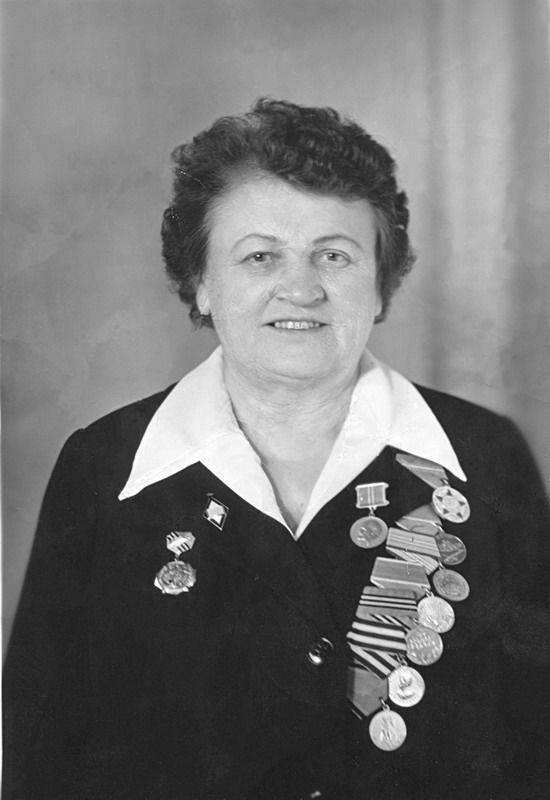
Some heroic members of the underground, as already noted above, managed to survive. Thus, the member of the underground Antonina Brintseva (1912-1998) was able to escape from the city for the front line and continued to serve in the Red Army as a commander of the liaison office, and after the war was engaged in educational activities. For a long time, from 1946 to 1974, she headed the Taganrog House of Pioneers, lived a decent and long life, and died in the year 1998 at the age of 86. By the way, in the second half of 1920's. Young Bryntseva was the organizer of the first pioneer cells in Taganrog, and then was elected a delegate to the 10th Congress of the All-Union Leninist Young Communist League.
In the Russian literature, the memory of the Taganrog underground was immortalized by the writer Heinrich Hoffmann, who in 1970 published the documentary story “Heroes of Taganrog”. It is known that back in 1943, after the liberation of Taganrog, the famous Soviet writer Alexander Fadeev arrived in the city. He was going to write about the struggle of the Taganrog underground with the Nazi invaders. But since at that time all the nuances of the organization’s failure had not yet been clarified and there were suspicions that there were traitors among the underground workers, Fadeev went to Krasnodon and wrote the legendary “Young Guard” about the Krasnodon underground. After almost three decades, the Hoffmann book was published. By the way, Heinrich Borisovich Hoffman (1922-1995), although inferior to Fadeev in fame as a writer, was a participant in the Great Patriotic War - a combat pilot who ended the war by the air squadron of the assault air regiment. Prior to 1962, Mr. Hoffman taught on officer courses “Shot”, then went to the reserve in the rank of colonel of aviation.
The fate of the police
As for the persons directly involved in the disclosure and destruction of the Taganrog underground from the enemy side, their fate is also known. Auxiliary police Taganrog during the occupation led traitor Boris Stoyanov. After the retreat of the Germans, he continued to serve in the ROA of General Vlasov, rose to the rank of captain. In the mountains of Italy, he participated in operations against Italian partisans, was captured by the British and handed over to Soviet counterintelligence. Boris Stoyanov was sentenced to death and executed. Provocateur Nikolai Kondakov was arrested after the war and also sentenced to death. It was possible to escape from Soviet justice to other policemen, who played an important role in exposing the underground. The head of the political department of the auxiliary police, Alexander Petrov, who served in the “Whites” during the Civil years, and who was sniffing the Nazis during the war, lived out his days in Germany. Investigator Alexander Kovalev also lived in Germany, then went to Canada. Another investigator, Alexei Ryauzov, settled in the United States in Miami after the war.
Использованы фотоматериалы сайта: https://sites.google.com/site/istoriceskijtaganrog/home/istoria-razvitia-1/podrobnosti/vov-17-10-41---30-08-43
Information